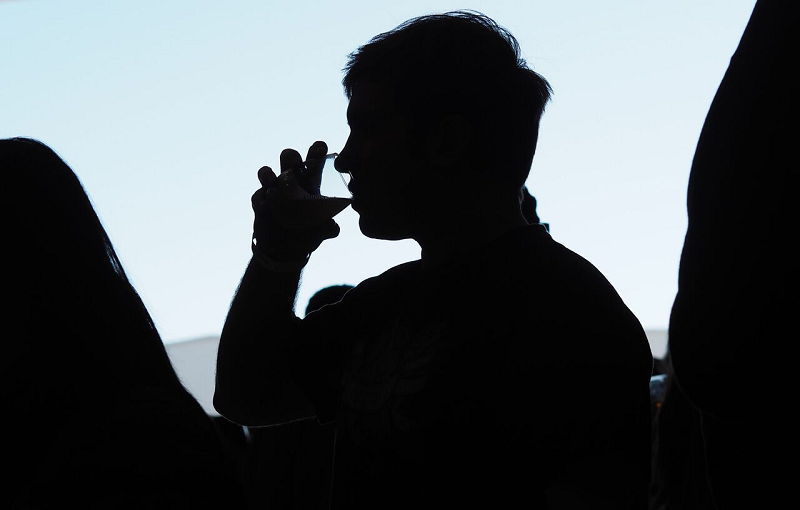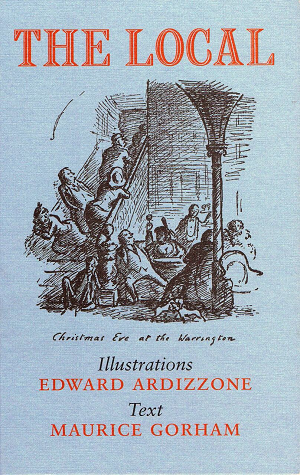Tracing the History of Beer Geeks

(Photo by Jon Page)
People these days take beer too seriously, right? Caring about what you drink, talking about it, and especially recording tasting notes seem to be regarded by some as a sign of the end times. But being a beer geek is not something that emerged alongside the books of Michael Jackson and the modern beer movement: people have been obsessing over beer for much longer.
One very early example can be found in the letters of James Howell (1594-1666). In a 1634 epistle to Lord Cliff he gave a long, detailed account of drinks popular around the world, including beer, and this passage amounts to an early example of a Jacksonian beer style guide:
In the Seventeen Provinces hard by, and all by low Germany, Beer is the common natural Drink, and nothing else, so it is in Westfalia, and all the lower Circuit of Saxony, in Denmark, Swethland and Norway; The Prusse has a Beer as yellow as Gold made of wheat, and it inebriates as soon as Sack. In some parts of Germany they use to spice their Beer, which will keep many years; so that at some Weddings there will be a But of Beer drunk out, as old as the Bride.
In the 19th century, lager beer emerged from Munich, Vienna and Pilsen. As it made its way around the world it appealed to a certain type of drinker—the “craft” beer enthusiasts of their day, such as the anonymous, presumably British author of an 1871 article published in a London magazine: ‘With my true Vaterland taste, I am glad the various conduits of beer are set flowing in the metropolis.’ Presaging the rhetoric of craft beer, Victorian fans of lager spoke of drinking for flavor rather than intoxication, of the delicacy of its flavor, and the importance of dainty glassware. They also argued that mainstream beer was full of additives while lager was pure (just as modern drinkers decry adjuncts and praise all-malt brews) and defended the high price of lager: quality beer, enjoyed in moderation, was worth paying for.
Leaping forward to the 1930s, there are a few more tantalizing hints that, even if they didn’t have Untappd and RateBeer accounts for broadcasting their interest to the world, there were people whose interest in beer was positively cerebral. A Book About Beer, published in 1934 under the pseudonym A Drinker, is evidence in its own right of that—it is perhaps the earliest example of what we would now recognize as (just about) book-length beer writing aimed at consumers rather than industry insiders. It also contains, however, a specific significant line: ‘In the view of the violent purist… bottled beer is a barbarism; one of the barbarisms of civilization, like bottled mayonnaise sauce.’ The author tends to the flippant but, still, that suggests that not only were there enough people interested in beer to warrant the writing of a book but that some of them were the kind of swivel-eyed beervangelicals we’ve all encountered from time to time.
The same decade gave us the Mass Observation sociology project whose study of Bolton in the north of England involved teams of mostly young students descending on the town and writing down everything they saw. They focused on pubs in particular resulting in the 1942 book The Pub and the People, a remarkable volume which is as close to experiencing time travel as any of us are likely to get. Among details of how many people used spittoons and the male-female mix in different pubs at different times, there is a description of a particular subset of beer drinkers: ‘Most pub-goers simply drink the cheapest available beer, while a minority exist for whom quality is most important.’ One pub landlord whose words were recorded by the Observers told a story about a particularly well-matured cask of bitter which, when tapped after six months, particularly impressed one drinker:
The stranger said that it was wonderful — ‘like wine’. This man took to calling in regularly for it, until the barrel was finished. It went soon because he told his friends, and they came in for it too.
The survey team also interviewed another drinker who sounds a lot like a modern day completist ticker:
There is, I think, many different brands of beer which so far I have not had the Pleasure of Tasting. Those I have, such as: Magee’s, Walker’s, Hamer’s, Cunningham’s, and one or two others, all have a nice Flavour… The Price question I will not Dispute, because I do not Drink Excessively, so I don’t favour any particular Beer.
There it is again: that suggestion that price is less important to those who are drinking for some reason other than the quickest or cheapest route to intoxication.
 Maurice Gorham wrote a book about London pubs, The Local, that was published in 1939. It contains a brief hint of a modest, dowdily British period version of the novelty-seeking urge:
Maurice Gorham wrote a book about London pubs, The Local, that was published in 1939. It contains a brief hint of a modest, dowdily British period version of the novelty-seeking urge:
…you have heard that an out-of-town brewery has a London pub where the bitter is unusually brilliant, and you decide to go and find it. You make many discoveries and draw many blanks… Between Halkin Street and Wilton Street there are no fewer than five pubs, all small, local, pleasant, giving you a choice of four different brews.
When he rewrote and expanded that book in 1949, publishing it under the title Back to the Local, he gave a lengthy description of how a connoisseur went about choosing his beer. The variety of draught beers, he argued, was complex and variable and they ‘take a bit of knowing, and repay study’.
The first half of the 20th century also saw a flurry of societies dedicated to beer in one way or another. The National Society for the Promotion of Pure Beer was founded in the county of Sussex in 1923; The Ancient Order of Froth Blowers was founded in London in 1924; the Pub Users’ Protection Society, also in London, in 1946; and in Derbyshire in 1959 the Black Pig Society was founded by a group of 20-somethings outraged at the spread of bland pasteurized beers. The Society for the Preservation of Beers from the Wood, with similar aims but more ambitious, held its first meeting in a pub on the outskirts of London in December 1963.
Our book, Brew Britannia, took 1963 as the starting point for the “alternative” strand in beer which, we argue, led to what we now know as “craft” beer, but perhaps we could have begun the tale earlier. Who knows how much more evidence lurks in out-of-print magazines, or in diaries and letters as yet unearthed?
Boak & Bailey have been blogging at boakandbailey.com since 2007. They were named 2014 beer writers of the year by the British Guild of Beer Writers for Brew Britannia: The Strange Rebirth of British Beer. They live in Cornwall in the far west of the U.K.

An opportunity here to maybe reprint some of these old books. As a beer geek I would certainly be interested!
John — Gorham’s The Local and the Mass Observation book are both available in excellent modern editions and so, so highly recommended. A Book About Beer unfortunately not so, though we got our copy for a few pennies a couple of years ago.
Excellent. Thanks for that!